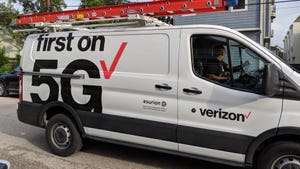
Huawei Technologies Co. Ltd. is claiming a speed breakthrough with peak upload data rates of 20 Mbit/s for its 3G uplink upgrades, but the technology may have limited applications for carriers already heading down the 4G Long Term Evolution (LTE) upgrade path. (See Huawei Claims 20Mbit/s HSUPA Links.)
The Chinese vendor says it has broken the High Speed Uplink Packet Access (HSUPA) record for peak single-user uplink data rates using Dual Carrier (DC) and Quadrature Amplitude Modulation (16QAM) technologies. HSUPA is the uplink part of the High-Speed Packet Access 3G technology that currently has native theoretical peak speeds that top out at 5.75 Mbit/s and average out at 1 Mbit/s or so on a network.
"Uplink rates are far lower than downlink rates, which can lead to a bottleneck of data services like video or image uploading," Huawei noted in a statement.
More than 50 carriers worldwide have deployed the original HSUPA technology. In the U.S., AT&T Inc. (NYSE: T) finished its upgrade in 2008 and the iPhone 4 was one of the first phones on the network to support it. Many Android users were aggravated in 2011 when they found that their HSUPA support had been disabled on Android phones, Ma Bell eventually rolled out upgrades for the devices.
Why this matters
Huawei is clearly looking at a global market with its HSUPA developments. Faster uploads could be useful for operators in Europe, Asia/Pacific and the Middle East that can't afford -- or get spectrum for -- 4G LTE upgrades.
However, for the many carriers on the LTE upgrade path, HSUPA capacity upgrades are unlikely to generate much excitement.
For more
AT&T Promises Superfast 'Blended 4G'
Elisa Turns on HSUPA
DoCoMo Sets HSUPA Date
AT&T Adds 3G Capacity in NY
— Dan Jones, Site Editor, Light Reading Mobile
About the Author(s)
You May Also Like











